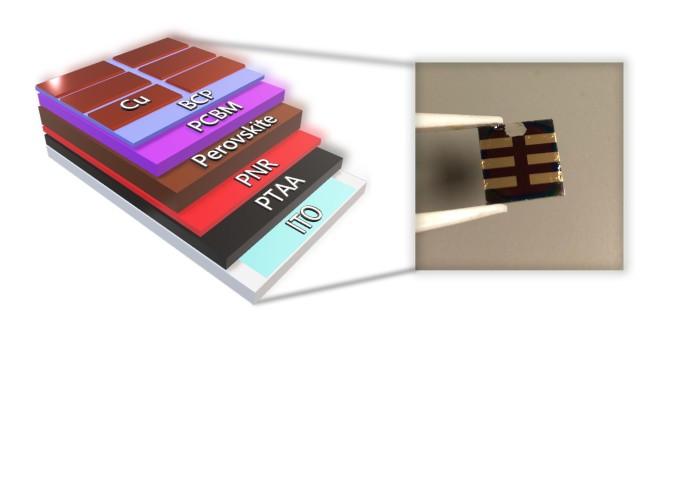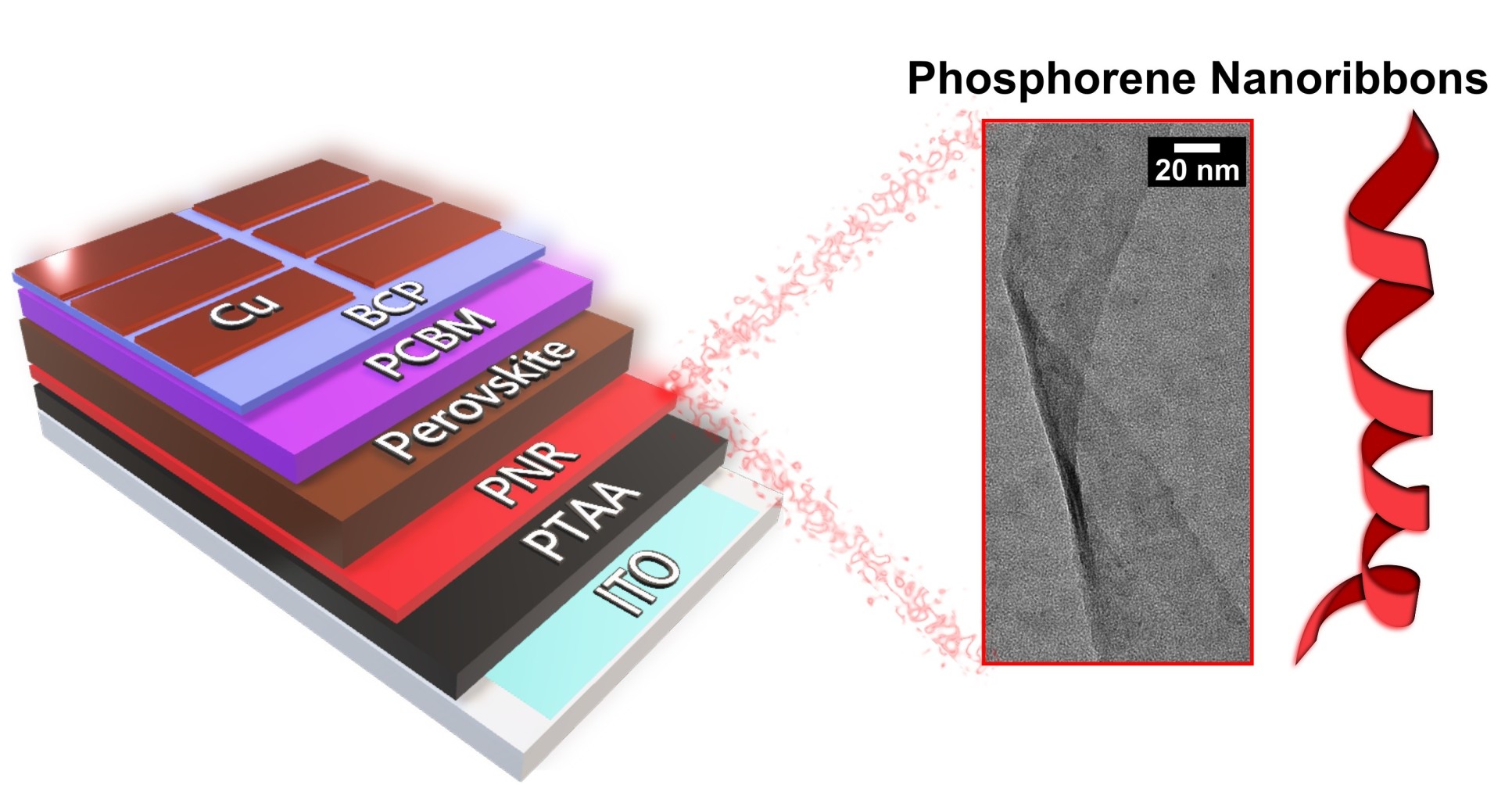‘Wonder material’ phosphorene nanoribbons live up to hype in first demonstration

The solar cell and its layers. Credit: T.J. Macdonald and T. Webb
Researchers have incorporated phosphorene nanoribbons into new types of solar cells, dramatically improving their efficiency.
Phosphorene nanoribbons (PNRs) are ribbon-like strands of the 2D material phosphorous, which, similar to graphene, are made of single-atom-thick layers of atoms. PNRs were first produced in 2019, and hundreds of theoretical studies have predicted how their properties could enhance all kinds of devices, including batteries, biomedical sensors, and quantum computers.
We are delighted to provide the first experimental evidence of PNRs as a promising route for high-performance solar cells. Dr Thomas Macdonald
However, none of these predicted exciting properties have so far been demonstrated in actual devices. Now, for the first time, a team led by Imperial College London and University College London researchers has used PNRs to significantly improve the efficiency of a device – a new kind of solar cell – demonstrating that the ‘wonder material’ may indeed live up to its hype.
The details are published today in the Journal of the American Chemical Society.
First experimental evidence
Lead researcher Dr Thomas Macdonald, from the Department of Chemistry and the Centre for Processable Electronics at Imperial, said: “Hundreds of theoretical studies have foreseen the exciting properties of PNRs, but no published reports have yet demonstrated these properties, or their translation into improved device performance.
“We are therefore delighted to not only provide the first experimental evidence of PNRs as a promising route for high-performance solar cells, but also showcase the versatility of this novel nanomaterial for use in next-generation optoelectronic devices.”
The team incorporated the PNRs into solar cells made from perovskites – a new class of materials that hold promise as scientists can easily change how they interact with light to suit a range of applications.

Contrary to traditional inflexible silicon-based solar cells, perovskite solar cells can be made from liquid solutions, facilitating low-cost printing into thin, flexible films. Novel nanomaterials, such as PNRs, can be simply printed as an extra layer to improve device functionality and efficiency.
By including PNRs, the team were able to produce perovskite solar cells with an efficiency above 21 per cent, on a par with traditional silicon solar cells. They were also able to experimentally verify just how PNRs are able to achieve this improved efficiency.
Unique electronic properties
They showed that PNRs improve ‘hole mobility’. ‘Holes’ are the opposite partner of electrons in electrical transport, so improving their mobility (a measure of the speed at which they move through the material) helps electrical current move more efficiently between layers of the device.
This experimental validation of the power of PNRs, the team say, will help researchers create new design rules for optoelectronic devices – those that emit or detect light.
Dr Macdonald said: “Our results show that the predicted functional electronic properties of PNRs indeed translate to improved performance in application. This highlights the genuine importance and utility of this newly discovered nanomaterial and sets the benchmark for PNR-based optoelectronic devices.”
Further studies using PNRs in devices will allow researchers to discover more mechanisms for how they can improve performance. The team will also explore how modifying the surface of the nanoribbons could improve the unique electronic properties of the materials.
-
‘Phosphorene Nanoribbon-Augmented Optoelectronics for Enhanced Hole Extraction’ by Thomas J. Macdonald et al. is published in the Journal of the American Chemical Society.
Article text (excluding photos or graphics) © Imperial College London.
Photos and graphics subject to third party copyright used with permission or © Imperial College London.
Reporter
Hayley Dunning
Communications Division